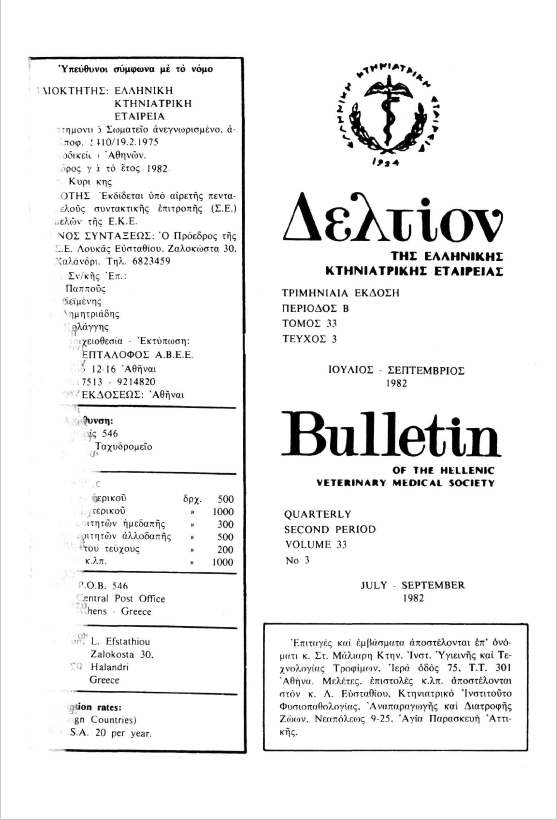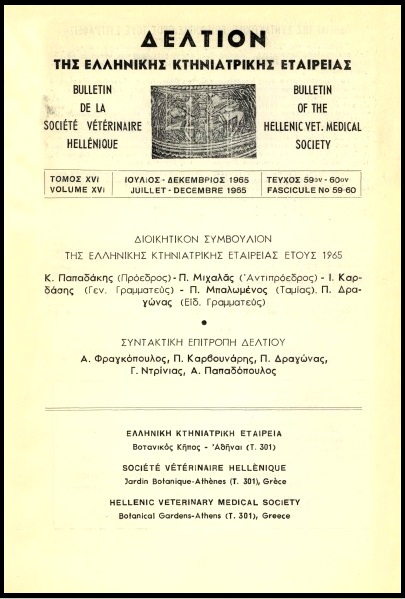Avermectins: An entirely new family of endo- and ectoparasiticides
Abstract
Avermectins, a new group of broad spectrum antiparasitic compounds, are macrocyclic dis saccharides devived by fermentation from the actinomycete Streptomyces avermitilis. A mixture that contains at least 80% 22,23-dihydroavermectin Bl a and not more than 20% 22,23- dihydroavermectin Bip, known under the generic name «ivermectin», has been proved to pocess the comparatively higher paralyzing effect on parasites than the rest six homologous avermectin compounds. Ivermectin, administered orally or subcutaneously in extremely low dosages( 100-200 mcg/kg b.w.), has high levels of broad spectrum activity against a variety of endo-and ectoparasites in several hosts, including all domesticated animals. Actually, the numerous research papers, that were published within the last three years, have shown the high efficacy of ivermectin against adult, immature and larval stages (active or inhibited) of the most important gastrointestinal or extra-intestinal, benzimidazole sensitive or resistant, nematode parasites of cattle, sheep, horses, swine, dog and poultry. Moreover, ivermectin is highly effective against mange mites, lice, cattle warbles, nasal bots, horse bots and a few ticks. In the low antiparasitic dosages used, ivermectin has a remarkable degree of safety to treated animals.
Article Details
- How to Cite
-
ΧΕΙΜΩΝΑΣ Χ. (2019). Avermectins: An entirely new family of endo- and ectoparasiticides. Journal of the Hellenic Veterinary Medical Society, 33(3), 286–296. https://doi.org/10.12681/jhvms.21553
- Issue
- Vol. 33 No. 3 (1982)
- Section
- Articles

This work is licensed under a Creative Commons Attribution-NonCommercial 4.0 International License.
Authors who publish with this journal agree to the following terms:
· Authors retain copyright and grant the journal right of first publication with the work simultaneously licensed under a Creative Commons Attribution Non-Commercial License that allows others to share the work with an acknowledgement of the work's authorship and initial publication in this journal.
· Authors are able to enter into separate, additional contractual arrangements for the non-exclusive distribution of the journal's published version of the work (e.g. post it to an institutional repository or publish it in a book), with an acknowledgement of its initial publication in this journal.
· Authors are permitted and encouraged to post their work online (preferably in institutional repositories or on their website) prior to and during the submission process, as it can lead to productive exchanges, as well as earlier and greater citation of published work.




